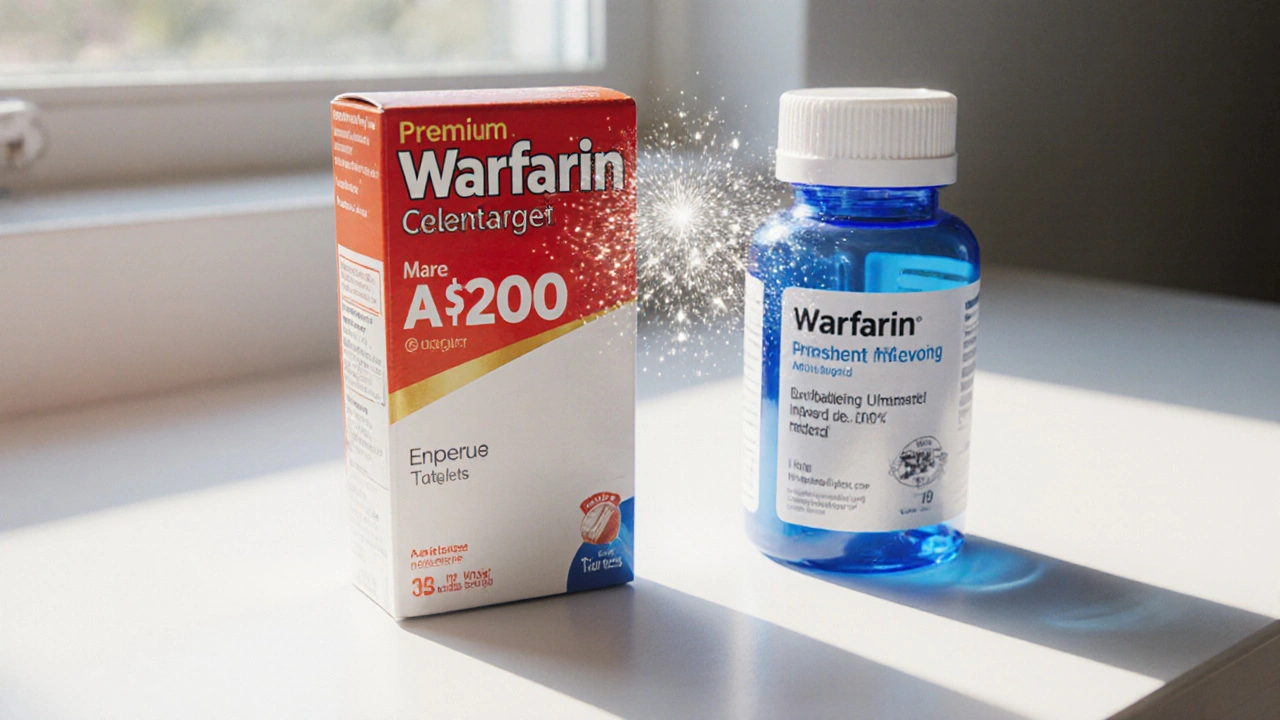Generic Warfarin: Essential Guide & Resources
When working with generic warfarin, a widely prescribed oral anticoagulant that blocks vitamin K‑dependent clotting factors. Also known as warfarin sodium, it helps prevent dangerous blood clots in conditions like atrial fibrillation, deep‑vein thrombosis, and after certain surgeries.
Understanding anticoagulant therapy, the broader treatment approach that includes drugs like warfarin, heparin, and newer direct oral anticoagulants is key because the goal is to keep blood thin enough to avoid clots but not so thin that it leads to bleeding. Warfarin is one of the oldest members of this family and remains a go‑to option when cost matters or when specific monitoring is required.
Key Aspects of Using Generic Warfarin
Effective INR monitoring, regular blood tests that measure the International Normalized Ratio to gauge clotting time is the cornerstone of safe warfarin use. The typical therapeutic INR range is 2.0–3.0 for most indications, but doctors may aim for a slightly higher or lower range depending on the condition. Skipping a test or taking the wrong dose can push the INR out of range, increasing the risk of a bleed or a new clot.
Warfarin belongs to the class of vitamin K antagonists, drugs that interfere with the recycling of vitamin K, a crucial factor for clot formation. Because of this mechanism, dietary vitamin K intake—found in leafy greens like spinach and kale—can affect how warfarin works. Consistency is more important than avoidance; if you eat a lot of greens one day, try to keep that pattern steady rather than making drastic changes.
One of the most common reasons patients start warfarin is to manage atrial fibrillation, an irregular heart rhythm that can cause blood to pool and clot in the atria. The clot can travel to the brain and cause a stroke, so maintaining the right anticoagulation level is lifesaving. Warfarin is also used for deep‑vein thrombosis (DVT), pulmonary embolism (PE), and after mechanical heart valve replacement.
Safety tips start with a medication list. Warfarin interacts with many drugs—antibiotics, antifungals, some heart medications, and even over‑the‑counter supplements like St. John’s wort. Tell your doctor about every product you take, and ask whether a new prescription might shift your INR. If you notice unusual bruising, blood in urine or stool, or sudden weakness, seek medical help right away; these could be signs of over‑anticoagulation.
Dosing isn’t one‑size‑fits‑all. Doctors usually start patients on a low dose (often 2–5 mg per day) and adjust based on INR results for the first few weeks. Some people are “sensitive” and need even less, while others are “resistant” and may need higher doses. Genetics play a role too—variations in the CYP2C9 and VKORC1 genes affect how quickly the body processes warfarin.
When it comes to buying generic warfarin, price matters for many patients. Online pharmacies that require a prescription can offer competitive rates, but you must verify the pharmacy’s license and read reviews for authenticity. Look for a pharmacy that provides a clear expiration date, proper packaging, and a pharmacist you can contact for questions.
Traveling with warfarin? Pack enough tablets to cover the trip plus a few extra days, keep them in their original labeled container, and bring a copy of your prescription. If you cross time zones, keep dosing times consistent with your home schedule to avoid INR swings.
Finally, remember that warfarin is a lifelong commitment for many conditions. Regular follow‑up appointments, consistent diet, and prompt reporting of side effects keep the treatment effective and safe. The posts below dive deeper into specific aspects like how to interpret INR results, manage drug interactions, and compare warfarin with newer anticoagulants.
Below you’ll find a curated collection of articles that break down these topics into easy‑to‑follow guides, so you can stay informed and confident while using generic warfarin.

Buy Cheap Generic Warfarin Online - Safe Guide & Best Prices (2025)
A step‑by‑step guide to safely buying cheap generic warfarin online, covering legal checks, pharmacy verification, price comparisons and essential safety tips.
